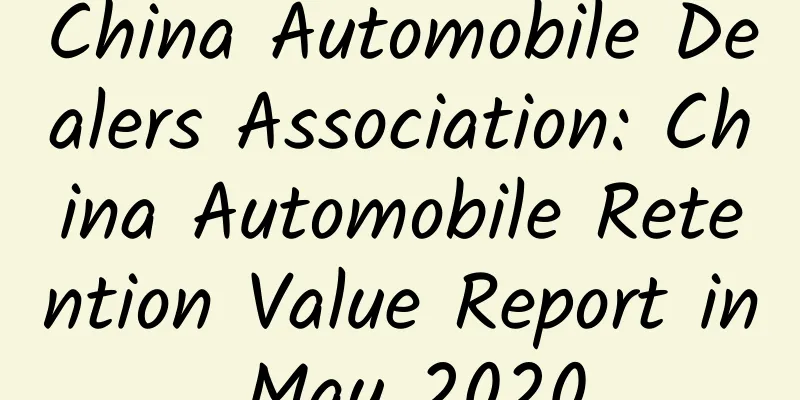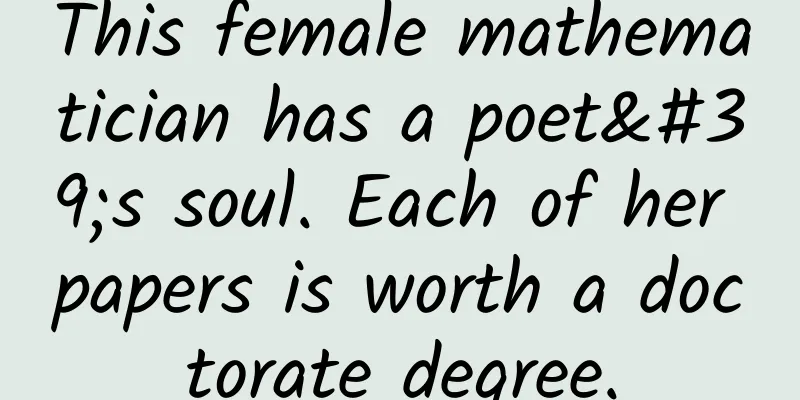China Automobile Dealers Association: China Automobile Retention Value Report in May 2020

|
On June 1, 2020, the China Automobile Dealers Association and Jingzhengu jointly released the "Research Report on China's Automobile Retention Value in May 2020". The research on retention value aims to reflect the comprehensive strength of the brand, such as product strength, recognition, and reputation, and to provide important data references for future repurchase, replacement, leasing, finance, new car pricing reference and other related businesses through in-depth research, thereby reducing business risks and improving operating efficiency. The so-called value retention rate refers to the ratio of the transaction price of a certain brand/model after it has been used for a period of time to the recommended price of a new car. It is affected by many factors such as vehicle age, mileage, vehicle condition, brand awareness, market share, maintenance costs, season, region and market environment, and is an important indicator to measure the speed of vehicle value decay. The data in this report is based on the analysis of multiple factors such as Jingzhenge's massive vehicle data source, intelligent valuation model, and market analysis, and has guiding and reference significance for the development of the automotive industry. Policy direction: "Two sessions representatives focus on the automotive industry" During the just-concluded two sessions, representatives of automobile companies and committee members proposed high-level proposals, and many topics on the development of the automobile industry were reviewed. The topics not only focused on the production and consumption of automobiles, but also put forward long-term opinions from the perspective of policies and regulations. For example, whether consumption tax and purchase tax need to be adjusted; whether restrictions on driving and purchase should be adjusted; how to improve infrastructure construction; accelerate the further development of intelligent network-related technologies (including intelligent detection of motor vehicles); promote the global development of the automobile industry; and policy recommendations on different technical routes such as hydrogen fuel, extended-range, and plug-in hybrid have become topics of concern to representatives. At the same time, in terms of new energy vehicles, the focus of discussion is no longer subsidies and qualifications, but emphasizes concepts such as "new infrastructure", "Internet of Vehicles", and "industry-finance integration". Hot Events: Brand Certification of Used Cars Has "Big Moves" For a long time, brand officials rarely promote used cars. The promotion of "Audi Official Certified Used Car 522 User Festival Online Live Broadcast" is the most powerful in history; among luxury brands, Lexus also launched "Certified Used Car 520 and Love"; SAIC Roewe MG brand has also made progress in used car certification. On May 30, the first SAIC used car certification center was established in Shanghai. Brand certified used cars have covered luxury brands, mainstream joint venture brands, and independent brands. Since 2019, mainstream manufacturers have no longer divided the market segments by body size. Instead, "pricing and quality" have become the basis for market segmentation. Against this background, many "classic" models have appeared in the new car market, which are actually relatively old technologies. Models with reduced configurations have been re-listed, such as "Sylphy Classic" and "Tiguan Silk Road Edition". Compared with this type of new car, certified used cars with brand endorsement are a better choice and give consumers greater value. Therefore, brand certified used cars can be said to be rising against the trend, revitalizing the stock, and creating a new segment. Online vehicle supply: Online vehicle supply exceeds the same period last year In May, the number of online vehicles was 892,000. Judging from the data, the negative impact of the epidemic on the used car market has ended. The monthly data has exceeded the 889,000 in the same period last year, and market confidence has fully recovered. To be cautious, the number of vehicles in May also includes some of the accumulated customer demand in the first quarter, which was concentrated in this period. At this moment, it is the busiest season for used car dealers. Value retention rate of each level: Second-hand car prices fell month-on-month, and the value retention rates of each level diverged Like April, used car prices fell month-on-month in May, but there were two incidental events in May that will have a certain impact on future used car prices. One is that heavy rains in Guangdong caused a large number of vehicles to be soaked in water; the other is that many manufacturers mobilized employees to buy cars internally, with large price discounts, which also indirectly affected the value retention rate of used cars. In terms of segmentation, small cars and small SUVs are not the mainstream market, but in times of greater economic pressure, small cars meet the rigid needs of travel, so they are now more popular. Among the new cars that have been launched recently, there are many MPVs, including Volkswagen Viloran, as well as the Jiaji, a new generation of independent brand Geely. The launch of new cars has brought a certain wait-and-see mood, and consumers have new choices. Joint venture brands: Japanese brands decline, German brands rise Among joint venture brands, the value retention rates of mainstream Toyota, Honda, Nissan, and Volkswagen have all declined. They seem unable to improve their sense of luxury and premium, and the manufacturer's pricing has generally tended to decline. The large number of vehicles in use is the biggest advantage of these mainstream brands. The value retention rates of luxury-oriented Mercedes-Benz, BMW, and Audi have all rebounded compared to last month. Among them, the second-hand car price of BMW's representative 3 Series has increased significantly this month, and the new 3 Series has failed to attract fans. This also poses new challenges to the modification and replacement of luxury brands. Domestic brands: Domestic brands have different value retention rates After some joint venture brands changed their logos or car logos, domestic brands also set off a wave of changing their logos, but the changes in the value retention rate after the change of logos are different. Brands with rising value retention rates include: Wuling Baojun, Beijing Auto, and Roewe MG; brands with declining value retention rates include: FAW Bestune. Wuling brand has many crossover passenger cars (microvans). After changing the logo and launching new model plans, Wuling and Baojun will jointly conquer the passenger car market, and the value retention rate is expected to continue to lead. Changes in the new energy vehicle market: Three mandatory national standards for electric vehicles released Three national standards for electric vehicles compiled by the Ministry of Industry and Information Technology were released in mid-May, replacing the "recommended" standards issued earlier in 2015, and officially upgraded to "mandatory" standards that companies must comply with. The acceleration of standard compilation work is due to the fact that electric vehicle safety accidents occurred many times last year, and battery energy density and safety have become two sides of the contradiction. Just last week, CATL and BYD launched a debate in the media about the "battery puncture test". In terms of time, this "puncture test" was almost synchronized with the release of the national standard. This indirectly confirms that the safety of electric vehicles has received enough attention, and its importance has become a widely recognized consensus. Different types: multiple technical routes show differences During the two sessions, representatives of car companies mentioned in their proposals that plug-in hybrid models are discriminated against by policies and are treated differently from electric vehicles in terms of road rights and other aspects. If we look at the data, plug-in hybrid models have a higher value retention rate. This shows that plug-in hybrid models with a wider range of applications have been recognized by the market. On the contrary, the value retention rate of well-protected pure electric vehicles is lower. Openness and diversity should be the premise for the healthy development of the entire new energy vehicle market. Although extended-range hybrid models are highly expected, the number of vehicles in use is still very low, and the value retention rate is also lower than that of plug-in hybrid models. Value retention rate of major new energy vehicle models: new energy product upgrades BYD Han is one of the most popular models at present. Other Dynasty series products such as Tang DM and Song EV have a high value retention rate. SAIC Roewe has a clear advantage in plug-in hybrid products, but pure electric products have not yet been launched. As a pure electric vehicle, Changan CS15EV has also achieved a high value retention rate due to its low pricing. The low-price strategy has also become a viable option for independent brands. The pre-sale price of the recently launched Wuling MINI EV is as low as 29,800 yuan. This type of low-priced product is conducive to the further promotion of pure electric vehicles. Monthly Summary This month, manufacturers represented by Audi, Lexus, and SAIC promoted their brand officially certified used cars, and took the lead in promoting their testing, maintenance, certification, retail and other value-preserving marketing services. Compared with new cars, brand certification endorsement is a better choice and brings greater value to consumers. Therefore, brand certified used cars can be said to have risen against the trend, revitalizing the stock, and creating a new segment. Online used car sources have fully recovered and are higher than the same period last year. Market confidence has fully recovered, and car dealers have taken this opportunity to vigorously carry out marketing activities. The rebranding of independent brands affects the residual value, and the value retention rate of each brand has increased and decreased differently. Three mandatory national standards were issued during the two sessions, and safety was taken seriously. |
<<: Apple's stock price plummeted 6% and has embarked on a bear market
Recommend
Internet TV market is about to change as new products are launched
Recently, Damai Technology said that the first ba...
The latest picture of Yutu-2 is released! Sending you New Year's greetings!
"Yutu" is here to wish you a happy new ...
Essential skills for private domain operators: private domain traffic generation
In the private domain operation capability model,...
Who would have thought that “donating feces” could actually make money! ?
Editor: He Jian “Donating feces” can make money I...
iOS/iPad OS 14.8.1 released: Apple recommends upgrading all older iPhone models
Not long after the official release of iOS 15.1, ...
6 channels for private domain traffic!
Many people don’t know how to generate private do...
Product and operation, why can’t you do conversion analysis well?
This article will share with you the necessity an...
Is the information flow promotion effect not good? Maybe you overlooked this!
Written in front This article is based on the gam...
Do you have these 5 smells at home? Strange smells at home are really dangerous!
One minute with the doctor, the postures are cons...
Comic Scroll丨Maizi's Journey
I am an ear of wheat, growing in the Central Plai...
LeakCanary: detect all memory leaks
Original text: LeakCanary: Detect all memory leak...
What is play therapy? Can it really cure illness?
In this era full of laughter and joy, every child...
Spring Festival Event- Technical Solution for Peak Reward Distribution
Author: Zhang Jian 1. Background The 2022 Spring ...
When is Shanghai expected to be fully unsealed in 2022? When will it end and return to normal? Attached is the latest news on the epidemic!
The epidemic situation in Beijing and Shanghai in ...









